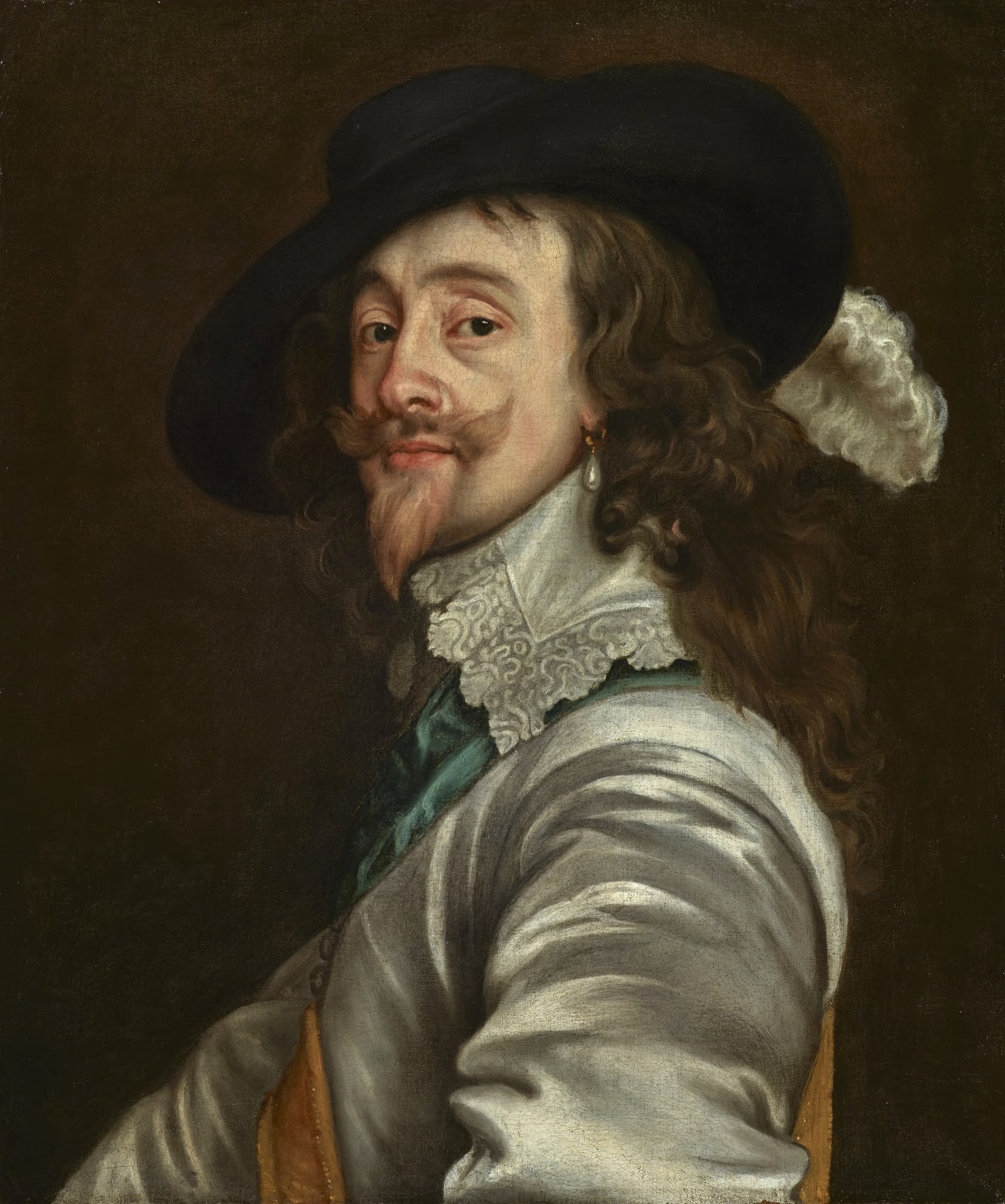Studio of Sir Anthony van Dyck (1599 - 1641)
Provenance
Private collection, U.K.
The relative scarcity of copies or derivations from the Louvre canvas, in comparison to other portraits of Charles, can be attributed to the fact that it did not remain in England for any length of time.[1] It is not known whether the portrait was an official commission from the King since it had not been paid for by 1638, when Van Dyck was requesting £200 for it but Charles valued it at only £100. If Charles did take possession of it, he must have given it away immediately since it does not appear in Abraham van der Doort’s inventory nor in any of the Commonwealth sales. It was recorded in France by the early 18th century when it acquired by the Comtesse Du Barry for her Chateau at Louveciennes before 1738 and was subsequently sold to Louis XVI in 1775 before entering the collection of the Louvre.
[1] The Irish-born artist, Charles Jervas (c.1675-1739, is known to have executed copies of the whole composition including one now at The Treasurer’s House, York. Copies by other hands can be found at Lamport Hall, Seaton Delaval and Lacock Abbey.
